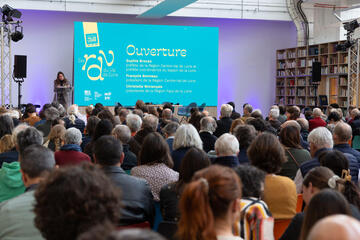Temples destroyed by explosives, tombs plundered, museum ransacked… damage to the archaeological site of the city of Palmyra, one of the Ancient World’s great cultural centres, following its occupation by the so-called Islamic State is heavy indeed. And equally so for the Syrian people, bombed, starving and with little help to count on.
In 2000, the Loire Valley was inscribed on the UNESCO World Heritage List, which reflects the richness and diversity of the planet’s cultural and natural heritage. Mission Val de Loire extends you a monthly invitation to acquaint yourself with other World Heritage sites, which are also our heritage.
An oasis in the Syrian desert to the northeast of Damascus, Palmyra accommodates the monumental ruins of a great city that was one of the Antique World’s largest centres of culture. At the crossroads of several civilisations, in the 1st and 2nd centuries Palmyra’s art and architecture brought together Greco-Roman technology, local traditions and Persian influences.
“Unite to save Palmyra” is Syria’s Director of Antiquities Maamoun Abdelkarim’s message to the world; he reckons “that it will take five years to rehabilitate its destroyed and damaged edifices”. A determination in which we can see the hope of re-establishing the country’s culture and history to its fullest extent and for every bygone era. Material, financial and deontological problems are enormous, but heritage professionals and institutions worldwide are rallying around UNESCO to solve them.
On the web:




![Nouvelles Renaissance(s] 2023](/var/storage/images/val-de-loire-refonte/dossier-de-parametrage/pied-de-page/nouvelles-renaissance-s-2023/517479-13-fre-FR/Nouvelles-Renaissance-s-2023_image_largeur220.png)


 Lettre d'information
Lettre d'information
 Facebook
Facebook
 Flickr
Flickr
 Podcloud
Podcloud
 Dailymotion
Dailymotion
 Box
Box
 Slideshare
Slideshare
 Diigo
Diigo

